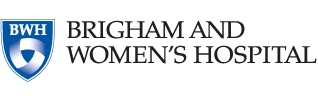HCMR - Novel Markers of Prognosis in Hypertrophic Cardiomyopathy
| Status: | Active, not recruiting |
|---|---|
| Conditions: | High Cholesterol, Cardiology, Orthopedic |
| Therapuetic Areas: | Cardiology / Vascular Diseases, Orthopedics / Podiatry |
| Healthy: | No |
| Age Range: | 18 - 65 |
| Updated: | 10/13/2018 |
| Start Date: | April 2014 |
| End Date: | April 2022 |
Hypertrophic cardiomyopathy (HCM) is the most common monogenic heart disease and the most
frequent cause of sudden cardiac death (SCD) in the young. It is characterized by unexplained
left ventricular hypertrophy (LVH), diffuse and patchy fibrosis, and myofibrillar disarray.
While the majority of patients remain asymptomatic, prognosis is poor in a subset who present
with SCD or progress to heart failure (HF). Current methods to predict risk of these adverse
events and to target therapy are limited. Current medical therapy does not protect against
SCD, nor does it prevent development of HF. Therefore, the identification of novel risk
markers would help develop therapeutic targets aimed at altering the phenotypic expression to
impact the natural history, especially SCD and HF. Cardiovascular magnetic resonance (CMR) is
emerging as a powerful tool for diagnosis and risk stratification in HCM including assessment
of LV mass and pattern of hypertrophy. Late gadolinium enhancement by CMR is a marker of
focal myocardial fibrosis which is thought to underlie the arrhythmogenic substrate as well
as promote development of HF. The investigators hypothesize that HCM patients with a higher
primary outcome event rate can be identified by novel CMR findings. The majority of cases of
HCM are autosomal dominant and about 60% are caused by mutations in genes encoding cardiac
sarcomeric proteins. However, the relationship between genetic mutation, disease phenotype,
and clinical outcomes remains poorly understood. The investigators hypothesize that HCM
patients with sarcomeric HCM mutations will have a higher primary outcome event rate and more
marked myocardial pathology on CMR than those without. Furthermore, there may be a link
between sarcomeric mutations and fibrosis, as mutation carriers with overt HCM as well as
those without hypertrophy have elevated markers of collagen turnover. The investigators
therefore hypothesize that serum biomarkers of collagen metabolism in HCM will predict
outcomes. Thus, the Specific Aim is to develop a predictive model of cardiovascular outcomes
in HCM by: 1) using exploratory data mining methods to identify demographic, clinical, and
novel CMR, genetic and biomarker variables associated with the outcomes and 2) develop a
score from the predictive model that can be used to assess risk given a patient's combination
of risk factors, thus establishing the evidence base to enable clinical trial design to
reduce morbidity and mortality in HCM in a cost-effective manner.
frequent cause of sudden cardiac death (SCD) in the young. It is characterized by unexplained
left ventricular hypertrophy (LVH), diffuse and patchy fibrosis, and myofibrillar disarray.
While the majority of patients remain asymptomatic, prognosis is poor in a subset who present
with SCD or progress to heart failure (HF). Current methods to predict risk of these adverse
events and to target therapy are limited. Current medical therapy does not protect against
SCD, nor does it prevent development of HF. Therefore, the identification of novel risk
markers would help develop therapeutic targets aimed at altering the phenotypic expression to
impact the natural history, especially SCD and HF. Cardiovascular magnetic resonance (CMR) is
emerging as a powerful tool for diagnosis and risk stratification in HCM including assessment
of LV mass and pattern of hypertrophy. Late gadolinium enhancement by CMR is a marker of
focal myocardial fibrosis which is thought to underlie the arrhythmogenic substrate as well
as promote development of HF. The investigators hypothesize that HCM patients with a higher
primary outcome event rate can be identified by novel CMR findings. The majority of cases of
HCM are autosomal dominant and about 60% are caused by mutations in genes encoding cardiac
sarcomeric proteins. However, the relationship between genetic mutation, disease phenotype,
and clinical outcomes remains poorly understood. The investigators hypothesize that HCM
patients with sarcomeric HCM mutations will have a higher primary outcome event rate and more
marked myocardial pathology on CMR than those without. Furthermore, there may be a link
between sarcomeric mutations and fibrosis, as mutation carriers with overt HCM as well as
those without hypertrophy have elevated markers of collagen turnover. The investigators
therefore hypothesize that serum biomarkers of collagen metabolism in HCM will predict
outcomes. Thus, the Specific Aim is to develop a predictive model of cardiovascular outcomes
in HCM by: 1) using exploratory data mining methods to identify demographic, clinical, and
novel CMR, genetic and biomarker variables associated with the outcomes and 2) develop a
score from the predictive model that can be used to assess risk given a patient's combination
of risk factors, thus establishing the evidence base to enable clinical trial design to
reduce morbidity and mortality in HCM in a cost-effective manner.
2.2 Rationale Presently used risk predictors in HCM for the clinical outcomes of SCD and HF
are still insufficient and limit clinical trials and institution of novel therapies in this
disease. This large scale, prospective clinical registry will systematically answer the
important question whether, through addition of a combination of advanced CMR phenotyping,
genetic and biomarker analysis, risk stratification in HCM could be substantially improved
over presently used clinical risk predictors. Emerging novel blood, genetic, and CMR markers
offer the paradigm-shifting promise of reliably identifying those at risk. In addition, this
will be the largest genotyped population of HCM available to correlate with comprehensive CMR
and biomarker evaluation. This will allow unique opportunities to evaluate genotype-phenotype
correlations and compare specific genetic subsets in a manner that has not been possible in
the past. This study will also establish a predictive model that can be used to assess risk
given a patient's combination of risk factors. This will help to select patients for future
clinical trials to prevent SCD and HF. In addition, it will identify surrogate endpoints to
monitor treatment response in HCM. In this way, the evidence base will be established in HCM
to enable clinical trial design to reduce morbidity and mortality in HCM in a cost-effective
manner.
3 OBJECTIVES The Specific Aim of this study is to develop a predictive model of
cardiovascular outcomes in hypertrophic cardiomyopathy by: 1) using exploratory data mining
methods to identify demographic, clinical, and novel CMR, genetic and biomarker variables
associated with the outcomes and 2) develop a score from the predictive model that can be
used to assess risk given a patient's combination of risk factors, thus establishing the
evidence base to enable clinical trial design to reduce morbidity and mortality in HCM in a
cost-effective manner.
To understand the relationship between these novel risk markers in HCM and clinical outcome,
the investigators propose a natural history study of 2750 patients with clinically diagnosed
HCM studied at baseline with collection of demographic data, clinical risk factors, as well
as novel markers from CMR, genotyping, and serum biomarkers of collagen turnover and
myocardial injury, enrolled over a 2-year period and followed for 3-5 years (mean of 4
years). The study will be powered to identify risk markers in a Cox model (imaging, serum,
and genetic beyond standard clinical risk factors) with a hazard ratio of 1.5 or greater for
the primary endpoint, which will be cardiac death (including SCD and HF death), aborted SCD
(appropriate discharge of an implantable cardioverter-defibrillator), and need for heart
transplantation. Secondary endpoints include all-cause mortality, ventricular
tachyarrhythmias, hospitalization for heart failure, atrial fibrillation, and stroke. This
study will enable establishment of a predictive model that will help to identify patients at
risk as well as patients for future clinical trials to prevent SCD and HF. In addition, it
will identify surrogate endpoints to monitor treatment response in HCM.
4 STUDY DESIGN 4.1 Selection of the Study Population
Patient characteristics:
2750 patients will be recruited and will include at least 51% females and 30% minorities.
Recruiting locations:
Inpatient or outpatient setting from 35-40 sites in North America and Europe
Serum Biomarker and DNA Samples Blood will be collected by peripheral venipuncture at
enrollment as a source of serum and plasma for biomarker analysis, as well as a source of DNA
for genetic testing. Fasting samples are requested but if this is not possible logistically,
non-fasting samples can be acquired and noted as such. The investigators will also ask
subjects to refrain from strenuous exercise for 24 hours prior to blood draw to decrease the
potential for spuriously elevated biomarkers that reflect the influence of vigorous physical
activity.
Cardiac MRI
A cardiac MRI will be performed and will take approximately one hour. 0.15mM of gadolinium
contrast will be infused through an intravenous line during the MRI.
Full details of the protocol will be in the Study Manual. Laboratory Evaluations 5.1.1
Specimen Collection, Preparation, Handling and Shipping Biomarker samples (Full details are
provided in the separate Biomarkers Technical Manual) 1. Collect 3, 10 ml tubes each of serum
and K3 EDTA plasma in the fasting state (or indicated non-fasting if fasting samples cannot
be obtained) DNA samples
1. Collect one 10ml EDTA tube. 6 STUDY SCHEDULE 6.1 Screening Patient's medical records will
be reviewed to be certain of diagnosis and eligibility.
Informed consent must be obtained by a member of the study team. 6.2 Baseline visit
Initial visit will be scheduled for study procedures as listed in #5 above. 6.3 Follow-up
Visits Yearly telephone follow-up will be obtained for up to 5 years and review of applicable
hospital or death records. Health status will be assessed with the SF-12 at this time.
10 STATISTICAL CONSIDERATIONS 10.1 Study Outcome Measures
The primary endpoint of this prospective study is the composite of cardiac death (SCD and HF
death), aborted SCD including appropriate ICD firing, and need for heart transplantation.
Secondary endpoints include all-cause mortality, ventricular tachyarrhythmias,
hospitalization for heart failure, atrial fibrillation, and stroke.
10.2 Sample Size Considerations Assuming a 3-year event rate of 4.2% based on recently
published literature10;11;26;27 and alpha error rate of 5%, 2500 patients provides over 90%
power to detect a hazard ratio of 1.5 for at least one risk factor in the Cox model. An
additional 250 (2750 total) patients will be enrolled to compensate for a projected dropout
rate of 2% per year.
10.3 Participant Enrollment and Follow-Up 2750 enrollees, will be followed up to 5 years.
10.4 Analysis Plan Because the anticipated event rate is small (4-5%), and the number of
potential predictive risk factors is large (20+), an exploratory, tree classification
analysis will be used to identify the strongest predictors and eliminate any that are judged
to have little or no predictive power. Based on the risk factors identified in the
exploratory analysis, a regression prediction model will be developed from which a summary
risk score for HCM can be calculated and easily used in clinical settings.
Tree-based data mining methods will be used to identify key variables in the prediction of
the primary outcome, a composite of cardiac death (SCD and HF death), aborted SCD including
appropriate ICD firing, and need for heart transplantation. Secondary endpoints will include
all-cause mortality, ventricular tachyarrhythmias, septal myectomy or alcohol ablation,
hospitalization for heart failure, atrial fibrillation, and stroke. Tree-based modeling is an
exploratory technique for uncovering structure in multivariate data28;29. It is particularly
useful for deriving prediction rules from a large number of screening variables or risk
factors. Tree models can be used for both classification (binary outcome) and regression
(continuous outcome). In either case, the collection of prediction rules (from the predictor
variables) is displayed in the form of a tree. The terminology mimics that of trees: the root
is the top node of the tree that displays the mean (regression) or proportion
(classification) of the outcome for the entire sample. A split is the rule for creating new
branches, and a leaf is a terminal node. Each node is a binary split of the predictor
variable that contains two sub-groups of the sample with the largest possible difference
between the groups. The same variable can appear in more than one level of the tree
(recursive partitioning).
The advantage of tree-based models over linear and additive models is that they are more
adept at capturing non-additive relationships and more easily uncover complex interactions
between predictor variables. Continuous variables or categorical variables with more than two
levels need not be dichotomized prior to the analysis - the tree algorithm determines the
cutoff value that produces the most homogenous nodes. Missing data can be treated as a
separate category. Initial tree models will include risk factors listed in the following
table as well as demographic variables, age, sex, and race.
Clinical CMR Genetic Biomarkers Family history of HCM-related SCD LV ejection fraction MYH7
NT-pro BNP Unexplained recent syncope LV mass/mass index MYBPC3 Singulex cardiac troponin
Massive LVH (wall thickness >30mm) Maximum diastolic wall thickness Thin filament mutations
PICP Multiiple burst of nonsustained VT LGE extent (% of LV mass) Compound/double
heterozygotes ST2 Hypotensive BP response to exercise Global extracellular volume fraction
Sarcomere mutation negative The initial tree is reduced in size (pruned) by comparing
misclassification error rates of smaller trees to larger trees to assess the reduction of the
predictive ability of trees resulting from the pruning process. The goal is to identify the
strongest predictors of HCM, any interactions of the predictors, and eliminate any factors
that have little predictive power. While tree models give rapid identification of the
strongest predictors and combinations of predictors, they do not usually result in clinically
useful prediction models that generalize well to patients in other settings. Regression
methods, using test-validation re-sampling procedures, will be used to develop the most valid
model possible.
Using the demographic, clinical, imaging, biomarker and genetic measures, plus any
interactions, identified in the tree analysis, Cox proportional hazards regression will be
used to develop a predictive model from which a summary risk score can be calculated and
applied in clinical settings. Parametric regression methods may be used if the proportional
hazards assumption is not met. The regression model will be developed using a 100-fold
validation procedure whereby 50% of the observations will be randomly selected for model
development (test sample) and the remaining 50% used to assess the model's predictive ability
(validation sample). This procedure will be repeated 100 times with a different random
selection of test-validation samples for each iteration. The c-index will be calculated to
assess model discrimination for both test and validation samples30. The ensemble of
test-validation models provides an estimate of the attenuation of the c-index when the model
is applied to a different sample as well as consistency of specific risk factors appearing in
the models. A final model will be constructed that includes the combination of the strongest
(high c-index and frequency of appearance) predictors. This model will then be applied to the
entire sample to estimate regression coefficients and hazard ratios and calculate a summary
risk score30. Nomograms will be constructed from the final model to provide predicted
probabilities of the risk scores. To increase the ease of use of a nomogram, variables which
are statistically significant but have little effect on prediction may be excluded. The model
will also be used to develop a prediction algorithm that rapidly calculates risk on a
hand-held electronic device. This analysis may also inform the design of clinical trials to
evaluate therapeutic efficacy by providing effect sizes (hazard ratios) to calculate sample
size requirements.
are still insufficient and limit clinical trials and institution of novel therapies in this
disease. This large scale, prospective clinical registry will systematically answer the
important question whether, through addition of a combination of advanced CMR phenotyping,
genetic and biomarker analysis, risk stratification in HCM could be substantially improved
over presently used clinical risk predictors. Emerging novel blood, genetic, and CMR markers
offer the paradigm-shifting promise of reliably identifying those at risk. In addition, this
will be the largest genotyped population of HCM available to correlate with comprehensive CMR
and biomarker evaluation. This will allow unique opportunities to evaluate genotype-phenotype
correlations and compare specific genetic subsets in a manner that has not been possible in
the past. This study will also establish a predictive model that can be used to assess risk
given a patient's combination of risk factors. This will help to select patients for future
clinical trials to prevent SCD and HF. In addition, it will identify surrogate endpoints to
monitor treatment response in HCM. In this way, the evidence base will be established in HCM
to enable clinical trial design to reduce morbidity and mortality in HCM in a cost-effective
manner.
3 OBJECTIVES The Specific Aim of this study is to develop a predictive model of
cardiovascular outcomes in hypertrophic cardiomyopathy by: 1) using exploratory data mining
methods to identify demographic, clinical, and novel CMR, genetic and biomarker variables
associated with the outcomes and 2) develop a score from the predictive model that can be
used to assess risk given a patient's combination of risk factors, thus establishing the
evidence base to enable clinical trial design to reduce morbidity and mortality in HCM in a
cost-effective manner.
To understand the relationship between these novel risk markers in HCM and clinical outcome,
the investigators propose a natural history study of 2750 patients with clinically diagnosed
HCM studied at baseline with collection of demographic data, clinical risk factors, as well
as novel markers from CMR, genotyping, and serum biomarkers of collagen turnover and
myocardial injury, enrolled over a 2-year period and followed for 3-5 years (mean of 4
years). The study will be powered to identify risk markers in a Cox model (imaging, serum,
and genetic beyond standard clinical risk factors) with a hazard ratio of 1.5 or greater for
the primary endpoint, which will be cardiac death (including SCD and HF death), aborted SCD
(appropriate discharge of an implantable cardioverter-defibrillator), and need for heart
transplantation. Secondary endpoints include all-cause mortality, ventricular
tachyarrhythmias, hospitalization for heart failure, atrial fibrillation, and stroke. This
study will enable establishment of a predictive model that will help to identify patients at
risk as well as patients for future clinical trials to prevent SCD and HF. In addition, it
will identify surrogate endpoints to monitor treatment response in HCM.
4 STUDY DESIGN 4.1 Selection of the Study Population
Patient characteristics:
2750 patients will be recruited and will include at least 51% females and 30% minorities.
Recruiting locations:
Inpatient or outpatient setting from 35-40 sites in North America and Europe
Serum Biomarker and DNA Samples Blood will be collected by peripheral venipuncture at
enrollment as a source of serum and plasma for biomarker analysis, as well as a source of DNA
for genetic testing. Fasting samples are requested but if this is not possible logistically,
non-fasting samples can be acquired and noted as such. The investigators will also ask
subjects to refrain from strenuous exercise for 24 hours prior to blood draw to decrease the
potential for spuriously elevated biomarkers that reflect the influence of vigorous physical
activity.
Cardiac MRI
A cardiac MRI will be performed and will take approximately one hour. 0.15mM of gadolinium
contrast will be infused through an intravenous line during the MRI.
Full details of the protocol will be in the Study Manual. Laboratory Evaluations 5.1.1
Specimen Collection, Preparation, Handling and Shipping Biomarker samples (Full details are
provided in the separate Biomarkers Technical Manual) 1. Collect 3, 10 ml tubes each of serum
and K3 EDTA plasma in the fasting state (or indicated non-fasting if fasting samples cannot
be obtained) DNA samples
1. Collect one 10ml EDTA tube. 6 STUDY SCHEDULE 6.1 Screening Patient's medical records will
be reviewed to be certain of diagnosis and eligibility.
Informed consent must be obtained by a member of the study team. 6.2 Baseline visit
Initial visit will be scheduled for study procedures as listed in #5 above. 6.3 Follow-up
Visits Yearly telephone follow-up will be obtained for up to 5 years and review of applicable
hospital or death records. Health status will be assessed with the SF-12 at this time.
10 STATISTICAL CONSIDERATIONS 10.1 Study Outcome Measures
The primary endpoint of this prospective study is the composite of cardiac death (SCD and HF
death), aborted SCD including appropriate ICD firing, and need for heart transplantation.
Secondary endpoints include all-cause mortality, ventricular tachyarrhythmias,
hospitalization for heart failure, atrial fibrillation, and stroke.
10.2 Sample Size Considerations Assuming a 3-year event rate of 4.2% based on recently
published literature10;11;26;27 and alpha error rate of 5%, 2500 patients provides over 90%
power to detect a hazard ratio of 1.5 for at least one risk factor in the Cox model. An
additional 250 (2750 total) patients will be enrolled to compensate for a projected dropout
rate of 2% per year.
10.3 Participant Enrollment and Follow-Up 2750 enrollees, will be followed up to 5 years.
10.4 Analysis Plan Because the anticipated event rate is small (4-5%), and the number of
potential predictive risk factors is large (20+), an exploratory, tree classification
analysis will be used to identify the strongest predictors and eliminate any that are judged
to have little or no predictive power. Based on the risk factors identified in the
exploratory analysis, a regression prediction model will be developed from which a summary
risk score for HCM can be calculated and easily used in clinical settings.
Tree-based data mining methods will be used to identify key variables in the prediction of
the primary outcome, a composite of cardiac death (SCD and HF death), aborted SCD including
appropriate ICD firing, and need for heart transplantation. Secondary endpoints will include
all-cause mortality, ventricular tachyarrhythmias, septal myectomy or alcohol ablation,
hospitalization for heart failure, atrial fibrillation, and stroke. Tree-based modeling is an
exploratory technique for uncovering structure in multivariate data28;29. It is particularly
useful for deriving prediction rules from a large number of screening variables or risk
factors. Tree models can be used for both classification (binary outcome) and regression
(continuous outcome). In either case, the collection of prediction rules (from the predictor
variables) is displayed in the form of a tree. The terminology mimics that of trees: the root
is the top node of the tree that displays the mean (regression) or proportion
(classification) of the outcome for the entire sample. A split is the rule for creating new
branches, and a leaf is a terminal node. Each node is a binary split of the predictor
variable that contains two sub-groups of the sample with the largest possible difference
between the groups. The same variable can appear in more than one level of the tree
(recursive partitioning).
The advantage of tree-based models over linear and additive models is that they are more
adept at capturing non-additive relationships and more easily uncover complex interactions
between predictor variables. Continuous variables or categorical variables with more than two
levels need not be dichotomized prior to the analysis - the tree algorithm determines the
cutoff value that produces the most homogenous nodes. Missing data can be treated as a
separate category. Initial tree models will include risk factors listed in the following
table as well as demographic variables, age, sex, and race.
Clinical CMR Genetic Biomarkers Family history of HCM-related SCD LV ejection fraction MYH7
NT-pro BNP Unexplained recent syncope LV mass/mass index MYBPC3 Singulex cardiac troponin
Massive LVH (wall thickness >30mm) Maximum diastolic wall thickness Thin filament mutations
PICP Multiiple burst of nonsustained VT LGE extent (% of LV mass) Compound/double
heterozygotes ST2 Hypotensive BP response to exercise Global extracellular volume fraction
Sarcomere mutation negative The initial tree is reduced in size (pruned) by comparing
misclassification error rates of smaller trees to larger trees to assess the reduction of the
predictive ability of trees resulting from the pruning process. The goal is to identify the
strongest predictors of HCM, any interactions of the predictors, and eliminate any factors
that have little predictive power. While tree models give rapid identification of the
strongest predictors and combinations of predictors, they do not usually result in clinically
useful prediction models that generalize well to patients in other settings. Regression
methods, using test-validation re-sampling procedures, will be used to develop the most valid
model possible.
Using the demographic, clinical, imaging, biomarker and genetic measures, plus any
interactions, identified in the tree analysis, Cox proportional hazards regression will be
used to develop a predictive model from which a summary risk score can be calculated and
applied in clinical settings. Parametric regression methods may be used if the proportional
hazards assumption is not met. The regression model will be developed using a 100-fold
validation procedure whereby 50% of the observations will be randomly selected for model
development (test sample) and the remaining 50% used to assess the model's predictive ability
(validation sample). This procedure will be repeated 100 times with a different random
selection of test-validation samples for each iteration. The c-index will be calculated to
assess model discrimination for both test and validation samples30. The ensemble of
test-validation models provides an estimate of the attenuation of the c-index when the model
is applied to a different sample as well as consistency of specific risk factors appearing in
the models. A final model will be constructed that includes the combination of the strongest
(high c-index and frequency of appearance) predictors. This model will then be applied to the
entire sample to estimate regression coefficients and hazard ratios and calculate a summary
risk score30. Nomograms will be constructed from the final model to provide predicted
probabilities of the risk scores. To increase the ease of use of a nomogram, variables which
are statistically significant but have little effect on prediction may be excluded. The model
will also be used to develop a prediction algorithm that rapidly calculates risk on a
hand-held electronic device. This analysis may also inform the design of clinical trials to
evaluate therapeutic efficacy by providing effect sizes (hazard ratios) to calculate sample
size requirements.
Inclusion Criteria:
- Patients aged 18-65 with an established diagnosis of HCM defined as unexplained LVH
defined as any segment ≥15mm thick, without a predisposing cause.
- Signed informed consent
Exclusion Criteria:
- Prior septal myectomy or alcohol septal ablation
- Prior myocardial infarction
- Incessant ventricular arrhythmias
- Inability to lie flat,
- Contraindication to CMR including pacemakers, defibrillators, intraocular metal,
certain types of intracranial aneurysm clips, severe claustrophobia,
- Stage IV/V chronic kidney disease with glomerular filtration rate <30 ml/min,
- Diabetes mellitus with end organ damage
- Pregnant female
- Inability to provide informed consent
We found this trial at
18
sites
75 Francis street
Boston, Massachusetts 02115
Boston, Massachusetts 02115
(617) 732-5500

Principal Investigator: Carolyn Ho, MD
Phone: 617-732-7317
Brigham and Women's Hosp Boston’s Brigham and Women’s Hospital (BWH) is an international leader in...
Click here to add this to my saved trials
3400 N Charles St
Baltimore, Maryland 21205
Baltimore, Maryland 21205
410-516-8000

Principal Investigator: Theodore P Abraham, MD
Phone: 410-502-7974
Johns Hopkins University The Johns Hopkins University opened in 1876, with the inauguration of its...
Click here to add this to my saved trials
800 Washington St
Boston, Massachusetts 02111
Boston, Massachusetts 02111
(617) 636-5000

Principal Investigator: Martin S Maron, MD
Phone: 617-636-8066
Tufts Medical Center Tufts Medical Center is an internationally-respected academic medical center – a teaching...
Click here to add this to my saved trials
330 Brookline Ave
Boston, Massachusetts 02215
Boston, Massachusetts 02215
617-667-7000

Principal Investigator: Evan Appelbaum, MD
Beth Israel Deaconess Medical Center Beth Israel Deaconess Medical Center (BIDMC) is one of the...
Click here to add this to my saved trials
9500 Euclid Avenue
Cleveland, Ohio 44106
Cleveland, Ohio 44106
216.444.2200

Principal Investigator: Milind Y Desai, MA
Phone: 216-445-5250
Cleveland Clinic Cleveland Clinic is committed to principles as presented in the United Nations Global...
Click here to add this to my saved trials
3181 Southwest Sam Jackson Park Road
Portland, Oregon 97239
Portland, Oregon 97239
503 494-8311

Oregon Health and Science University In 1887, the inaugural class of the University of Oregon...
Click here to add this to my saved trials
1500 E Medical Center Dr
Ann Arbor, Michigan 48109
Ann Arbor, Michigan 48109
(734) 936-4000

Principal Investigator: Adam Helms, MD
Phone: 734-764-4500
University of Michigan Health System The University of Michigan is home to one of the...
Click here to add this to my saved trials
Click here to add this to my saved trials
1215 Lee St
Charlottesville, Virginia 22903
Charlottesville, Virginia 22903
(434) 924-0211

Principal Investigator: Michael Salerno, MD, PhD
Phone: 434-243-0736
University of Virginia Health System UVA Health System includes a 604-bed hospital, level I trauma...
Click here to add this to my saved trials
303 E Chicago Ave
Chicago, Illinois 60611
Chicago, Illinois 60611
(312) 503-8194

Principal Investigator: Lubna Choudhury, MD
Phone: 312-695-4965
Northwestern University Feinberg School of Medicine Northwestern University Feinberg School of Medicine, founded in 1859,...
Click here to add this to my saved trials
2301 Erwin Rd
Durham, North Carolina 27710
Durham, North Carolina 27710
919-684-8111

Principal Investigator: Han Kim, MD
Duke Univ Med Ctr As a world-class academic and health care system, Duke Medicine strives...
Click here to add this to my saved trials
Houston, Texas 77030
Principal Investigator: Sherif F Nagueh, MD
Phone: 713-441-3963
Click here to add this to my saved trials
New Haven, Connecticut 6520
(203) 432-4771

Principal Investigator: Daniel Jacoby, MD
Phone: 203-737-4551
Yale University Yale's roots can be traced back to the 1640s, when colonial clergymen led...
Click here to add this to my saved trials
Click here to add this to my saved trials
New York, New York 10019
Principal Investigator: Bette Kim, MD
Click here to add this to my saved trials
New York, New York 10065
Principal Investigator: Jonathan Weinsaft, MD
Click here to add this to my saved trials
Philadelphia, Pennsylvania 19104
Principal Investigator: Anjali T Owens, MD
Phone: 800-789-7366
Click here to add this to my saved trials
Rochester, Minnesota 55905
Principal Investigator: Eric Williamson, MD
Phone: 507-284-2511
Click here to add this to my saved trials